Cutting edge science in a supportive environment
The SAAO offers students the opportunity to work with leading researchers on cutting edge astronomy and instrumentation projects. These cover observational and theoretical aspects of stellar and extragalactic astronomy, astronomical instrumentation and computer modelling. Many projects involve combining and analysing data from different wavelengths, e.g. optical data from SAAO/SALT with radio data from MeerKAT and/or X-ray measurements from spacecraft. There are also numerous opportunities for collaboration with national and international partners. Details are given in the project descriptions.
Projects
PhD
| Supervisor | Project title | University |
|---|---|---|
| Nicolas Erasmus | Automated Follow-Up Characterization of Hazardous and Resourceful Near-Earth Asteroids Using SAAO Telescopes | Any |
| Paul Groot | Fast optical and radio transients in the Nearby Universe | UCT |
| Paul Groot | The Galactic population of Ultracompact binaries as LISA sources | UCT |
| Sabyasachi Chattopadhyay | Development of South African Multi-Object Spectroscopic Array (SAMOSA) | NWU or UCT |
| Sabyasachi Chattopadhyay | Probing ionizing mechanisms in nearby massive galaxies using SALT Slit Mask Integral Field Unit | NWU or UCT |
| Lee Townsend | Optical & near-Infrared variability in Be/X-ray binaries | UCT |
| Moses Mogotsi | MeerChoirs Multi-wavelength Studies of Galaxy Evolution in Nearby Galaxy Groups | UCT |
| Moses Mogotsi | Relating the Star formation and Gas Kinematics in Nearby Galaxies | UCT |
| Itumeleng Monageng | Long-term Be disc structural study of Be X-ray binaries using MeerLICHT and SALT | UCT |
MSc
| Supervisor | Project title | University |
|---|---|---|
| Zara Randriamanakoto | SC2RG Survey: investigating blue stellar clumps in a sample of Collisional Ring Galaxies | UCT |
| Lee Townsend | Optical & near-Infrared variability in Be/X-ray binaries | UCT |
| Itumeleng Monageng | Long-term Be disc structural study of Be X-ray binaries using MeerLICHT and SALT | UCT |
| Nicolas Erasmus | Photometric and spectroscopic observations of asteroids using Sutherland telescopes | Any |
| Moses Mogotsi | Multi-wavelength studies of Star formation and Gas Kinematics in Nearby Galaxies | UCT |
| Paul Groot | Modelling system parameters of Galactic Pulsating stars | UCT |
| Paul Groot | Modelling system parameters of Galactic Compact binaries | UCT |
| David Buckley | Erupting Dwarf Nova discovered by MASTER | UCT or UFS |
Application process
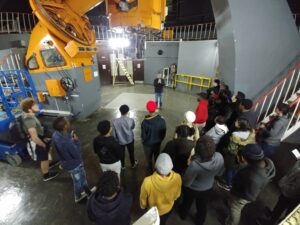 To do postgraduate research at SAAO students must register with a South African University and those who require funding must apply to the NRF, following the standard procedures, for PhD or MSc.
To do postgraduate research at SAAO students must register with a South African University and those who require funding must apply to the NRF, following the standard procedures, for PhD or MSc.
Note that NRF are advising students to apply as soon as they can to prevent IT overload near the cut-off dates.
Students of any nationality are eligible to apply for NRF bursaries, however, strong preference is given to South African citizens and permanent residents.
If you are a student wishing to do research at SAAO under the (co)supervision of an SAAO staff member you should:
1) Send your CV to the SAAO staff member(s) offering the project(s) you are interested in. Discuss the research with them to determine if you have the required qualifications, skills and abilities to undertake the project. You may contact as many potential supervisors as you like.
2) If an SAAO staff member agrees to supervise you, discuss with them which university you should apply to register with.
3) You will need to register with ORCID (https://orcid.org/) and get a number before you can apply for the NRF grant through the university.
4) Apply to the NRF for funding through the university and with the active support of your proposed SAAO supervisor, who will ensure you fill in the correct details in all sections. This is important as applications are often rejected on technicalities.
5) Once you have finished this process send your NRF application number to your SAAO supervisor.
The NRF closing date for application for 2025 is 05 July 2024, but each university has its own, earlier, deadline, so you have to check on the deadline that is relevant to you. Completing the NRF application will take time, and requires various documents and letters. It is essential that you complete your discussions with your potential supervisor(s) well before the deadline.
If you require funding, you must consult the framework document to ensure that you qualify for NRF support.
Working at the SAAO
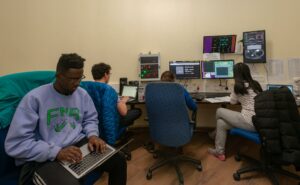 SAAO’s headquarters are situated in the historic suburb named after it – Observatory. The park-like grounds, bordered by a wetland, are a peaceful environment conducive to study and research. Regular colloquia and other science meetings provide opportunities to engage with staff, students and visiting scientists, including those from UCT, UWC and SARAO, which are nearby.
SAAO’s headquarters are situated in the historic suburb named after it – Observatory. The park-like grounds, bordered by a wetland, are a peaceful environment conducive to study and research. Regular colloquia and other science meetings provide opportunities to engage with staff, students and visiting scientists, including those from UCT, UWC and SARAO, which are nearby.
Training and service work opportunities are offered in observing, data analysis (including supercomputing and handling big data), coding (e.g. Python, Java, C++), the design and construction of astronomical instrumentation, web development, English writing and verbal communication skills, public relations and outreach. Students fluent in SA languages other than English are encouraged to help with writing/translating education material. The International Astronomical Union Office of Astronomy for Development (IAU OAD www.astro4dev.org) is based at SAAO and students are also encouraged to help them with resource development. The African Astronomical Society (AfAS) is also hosted on the SAAO site, facilitating opportunities for collaboration across the continent.
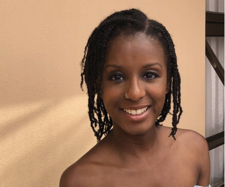
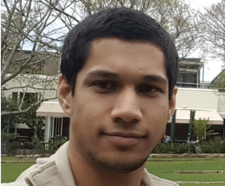
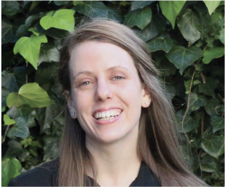
In addition to their research-supervisor, students benefit from the support of SAAO administrative and technical staff and will have access to a mentor (usually an early career member of the research staff or a postdoc).
Most students supervised by an SAAO staff member are expected to spend at least half their time at SAAO (Cape Town), but are encouraged to visit their universities and to attend relevant conferences and meetings. They will be asked to sign an MoU with SAAO and their supervisor that commits them to at least 40-hours per annum service work for SAAO. In return they will be provided with:
- Office space and resources
- Computer resources; details depend on the research project
- Funding for supervisor-approved observing
- Funding for supervisor-approved conference or workshop attendance, national and/or international
- Other approved research expenses
